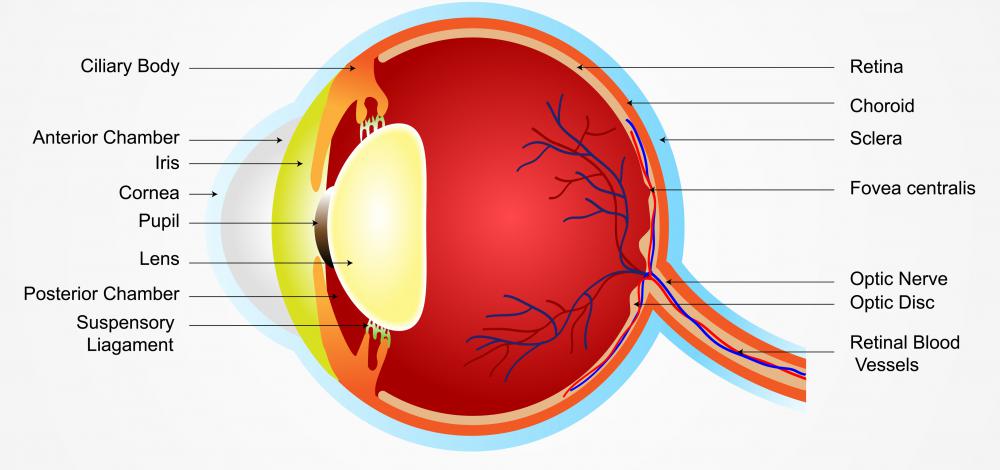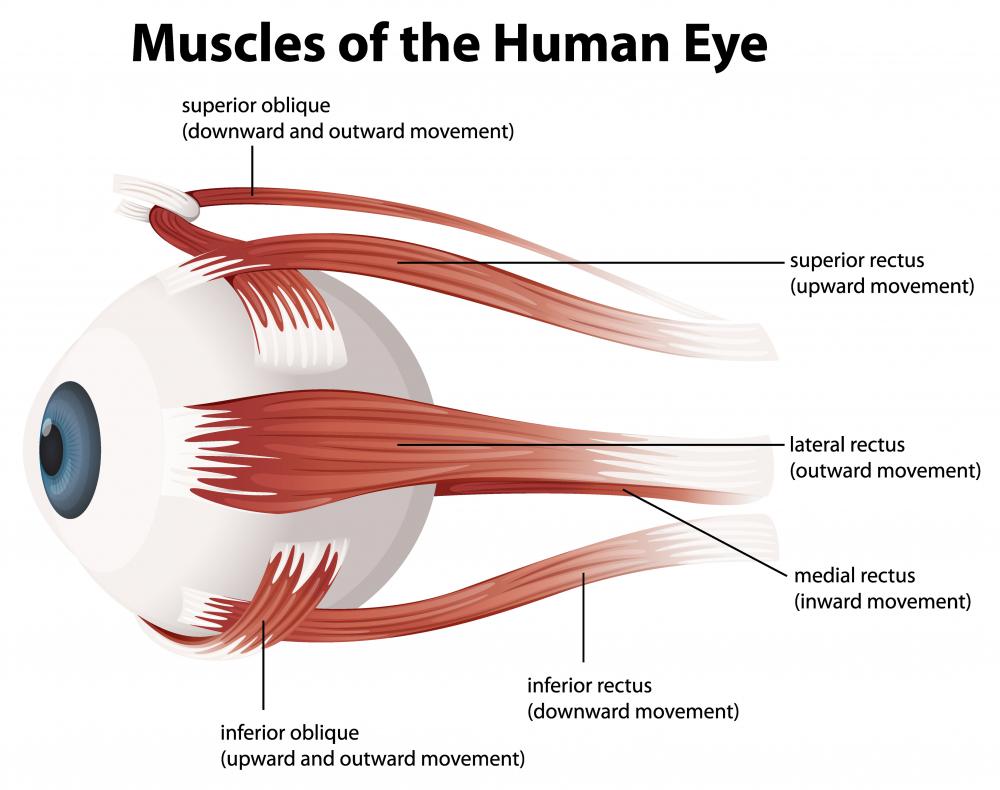At WiseGEEK, we're committed to delivering accurate, trustworthy information. Our expert-authored content is rigorously fact-checked and sourced from credible authorities. Discover how we uphold the highest standards in providing you with reliable knowledge.
What is the Superior Rectus?
The superior rectus is a muscle found in the orbital cavity of the face. This cavity is often referred to as the eye socket. As one of the extraocular muscles, the superior rectus plays an important role in the movement of the eye. The primary function of this muscle is to elevate the eye so that the eyeball moves in an upward direction. The muscle also allows the eye to move in a medial direction, meaning that the eye rotates toward the middle of the body.
The superior rectus muscle begins at the Annulus of Zinn, which is also referred to as the common tendinous ring or the annular tendon. This structure surrounds the optic nerve and is the point of origin for most of the extraocular muscles, including the superior rectus. The Annulus of Zinn garners its name from the German scientist named Johann Gottfried Zinn.

The sclera is the white portion of the eyeball and serves as a point of insertion for the superior rectus. The sclera functions as a protective covering for the eye. This portion of the eye also allows for emotional expression, aiding in nonverbal communication.
When in its normal state, the superior rectus muscle holds the eye in a position that allows it to look forward. When the muscle contracts, the eye is able to look upward as well as inward. This movement not only aids in a person's field of vision, but it also helps others to detect nonverbal emotional responses based on the movement of the eye.

The superior rectus muscle is prone to damage from traumatic injuries involving the face and head as well as from some naturally occurring medical conditions. Muscle palsy involves a partial or complete paralysis of the muscle. The primary symptom of muscle palsy involving the superior rectus muscle is a condition known as diplopia, better known as double vision. The exact cause for this condition is often unclear, although some patients are born with muscle palsy. Surgery is the most common as well as the most successful treatment for muscle paralysis.

Muscle rupture or tearing can occur when there has been a traumatic injury to the facial region. This type of injury can be quite painful, and the symptoms will vary, depending on the severity of the injury. Surgery is almost always required, as surrounding tissues and structures are generally affected as well as the superior rectus itself.
AS FEATURED ON:
AS FEATURED ON:
















Discuss this Article
Post your comments